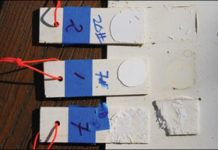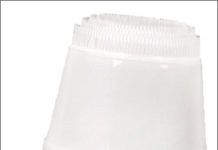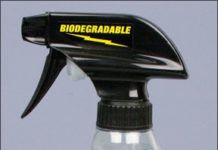Marine Maintenance: Multi-purpose Cleaners Test
We tested a total of 15 products-including eco-friendly cleaners, concentrated formulas, degreaser-cleaners, and even one homebrew formula-from 11 manufacturers. While the test field wasn't inclusive of all the marine cleaners marketed as multi-purpose products, it did include a good cross-section of products from such companies as Star brite, Nautical Ease, Spray Nine, Yacht Brite, Biokleen, MDR, and Marykate. To get an idea of how they would stand up to real-world tasks, the products were tested on grease and grime on multiple surfaces-fiberglass, rubber, vinyl, and Formica. Practical Sailor also measured the pH balance of each test cleaner to find out which products were best suited for certain applications. With multiple data tables presenting the test findings, the report offers PS's picks for the best general cleaner, the best green cleaner, and the product that offers the best clean for the buck.
The Great Stickup: Practical Sailor Tests Marine Adhesives, Caulks, and Sealants
Practical Sailor rounded up seven readily available marine sealants and adhesives, including products from 3M, West Marine, BoatLife, and Sika Corp. The test included four polyurethane-based products, one silicone product, one polysulfide caulk, and one polyether caulk. Testers found that not all caulks will work for all applications. For example, the versatile polyurethane 3M 4200 was fast drying but didnt adhere well to wood, and all polyurethane products have to be kept away from acrylics and Lexan surfaces. Products tested were: 3M 5200 Fast Cure, 3M 4200 Fast Cure, West Marine 8200, Sikaflex 291 Lot, 3M Silicone, BoatLife Life-Caulk, and West Marine Multi-caulk.
Are Mildew Preventers the Best Defense?
In January 2009, Practical Sailor tested 14 mold and mildew cleaners, and two household products stood out: the super-chlorinated Klean-Strip Mildew Stain Remover and Spray Nine, a chlorine-free household cleaner. After that test, several readers asked about products to prevent mold. One product in particular, Concrobium Mold Control, was repeatedly suggested for testing. We found Concrobium at Home Depot, and to make things interesting, we included two other mildew preventers that readers suggested: 3M Marine Mildew Block, a treatment formulated to follow the 3M Mildew Cleaner tested in January, and Mold Off, a product billed as an eco-friendly commercial-grade cleaner and protectant.
Two-Part Teak Cleaners
Whether its wood flooring or boat decks youre dealing with, cleaning teak presents special challenges. In March 2008, we tested one-part teak cleaners to see which ones cleaned teak decks without being too harsh on the wood, the applicator, or environment. In this report, Practical Sailor follows up with an evaluation of two-part cleaners and how they compare to one another and to the top pick from the test of one-part solutions for cleaning teak. Testers applied five two-part cleaners for this test. Four of these were liquids: Amazons Quicki-II Teak Cleaner, Nautical Ease Teak Cleaner and Brightener, West Marines Teak Cleaner and Brightener, and TE-KA Teak Wood Cleaner by Marinetex. Tip Top Teak combines liquid and granular powder parts. Two-part cleaners were compared to Iosso one-part teak cleaner.
K2r Works on Canvas, Carpet, and Teak
As all boatowners know, spills and stains are inevitable, particularly when you count children among your crew. Our heavily trafficked teak cabin soles and fabric-covered settees have seen their fair share of misfortune, so we keep our ears open for any recommended stain removers. A recent hunt for a product to clean stains from teak led us to K2r SpotLifter, which came highly recommended by Teak Decking Systems Jeff Scott.
Shurhold Shines Among Electric Buffers
Practical Sailors endless testing of hull waxes and polishes gives us ample opportunity to try out electric buffers. Weve used countless brands and types over the years-from cheapos to professional grade-and decided to see how Shurhold Industries new Dual-Action Polisher compared.
Bottom Paint Test Updates
These six-month and 18-month bottom paint test updates cover dozens of antifouling paints that were immersed in Florida waters.Tested paints include marine coatings from Blue Water, Epaint, Flexdel, Interlux, Pettit, Sea Hawk, and Copper Coat, an epoxy-copper blend that claims multi-year protection. BoatKoat Laminates experimental stick-on antifouling for sailboats also was included in the fray. Hard antifouling paints and ablative antifouling paints work differently and are intended for different applications. Find out which type best matches your sailing style and boat maintenance regimen. Testers flagged the best bottom paints in each category, including ablative paints, hard paints, freshwater paints, aluminum paints, racing paints, water-based paints, and eco-friendly paints. Copper-free bottom paints and low-copper coatings performed surprisingly well at the six-month mark.
The Search is on for the Best Degreaser for Marine Grit and Grime
Practical Sailor searched for the top liquid degreasers to tackle heavy grease on marine stoves and marine engines. Eleven products were tested, including Chomp oil eater, Holy Cow degreaser, Kafko degreaser, Krud Kutter degreaser, Mary Kate Grease Away, Star brite All Purpose Citrus Cleaner Degreaser, and Star brite Sea Safe Cleaner Degreaser. Practical Sailor tested the liquid marine cleaners on grimy fiberglass panels and on aged, greasy farm equipment engines.
Liquid Wax Test Reaches Six-month Mark
Practical Sailor applied dozens of liquid boat waxes to fiberglass test panels in 2009 to determine which was easiest to apply and was the best for long-term protection of a fiberglass boat. The panels were set out to suffer in the Florida weather for six months, when testers checked in on them to see which waxes still had a gloss and which could still bead water. Topping the marine wax test field in their respective categories were products from Star brite, Cajun Shine All, Collinite, 3M, Nu Finish, Yacht Brite, and West Marine Pure Oceans,. Testers’ top picks for a shiny hull that lasts and is protected from UV damage were the 3M Scotchgard Marine Liquid Wax and Star brite’s Premium Marine Polish.
If You Cant Duct It, Tough Duct It
The new line, Scotch Tough Duct Tapes, includes: a new No Residue tape, said to handle temps up to 200 degrees, that can be left on for up to six months without leaving a sticky mess behind; an Extreme Hold tape, which uses a double-layer adhesive for a better grip that wont fail under pressure; a Heavy-duty All-Weather tape designed for long-term (even permanent) exterior repairs that 3M claims will stand up to UV and moisture without cracking or peeling; and Outdoor Painters Clean Removal tape, which is marketed as a paint pros choice for high adhesion, waterproof backing, and clean removal for up to two weeks. The line also touts the first-ever transparent duct tape for "invisible" repairs.


















































